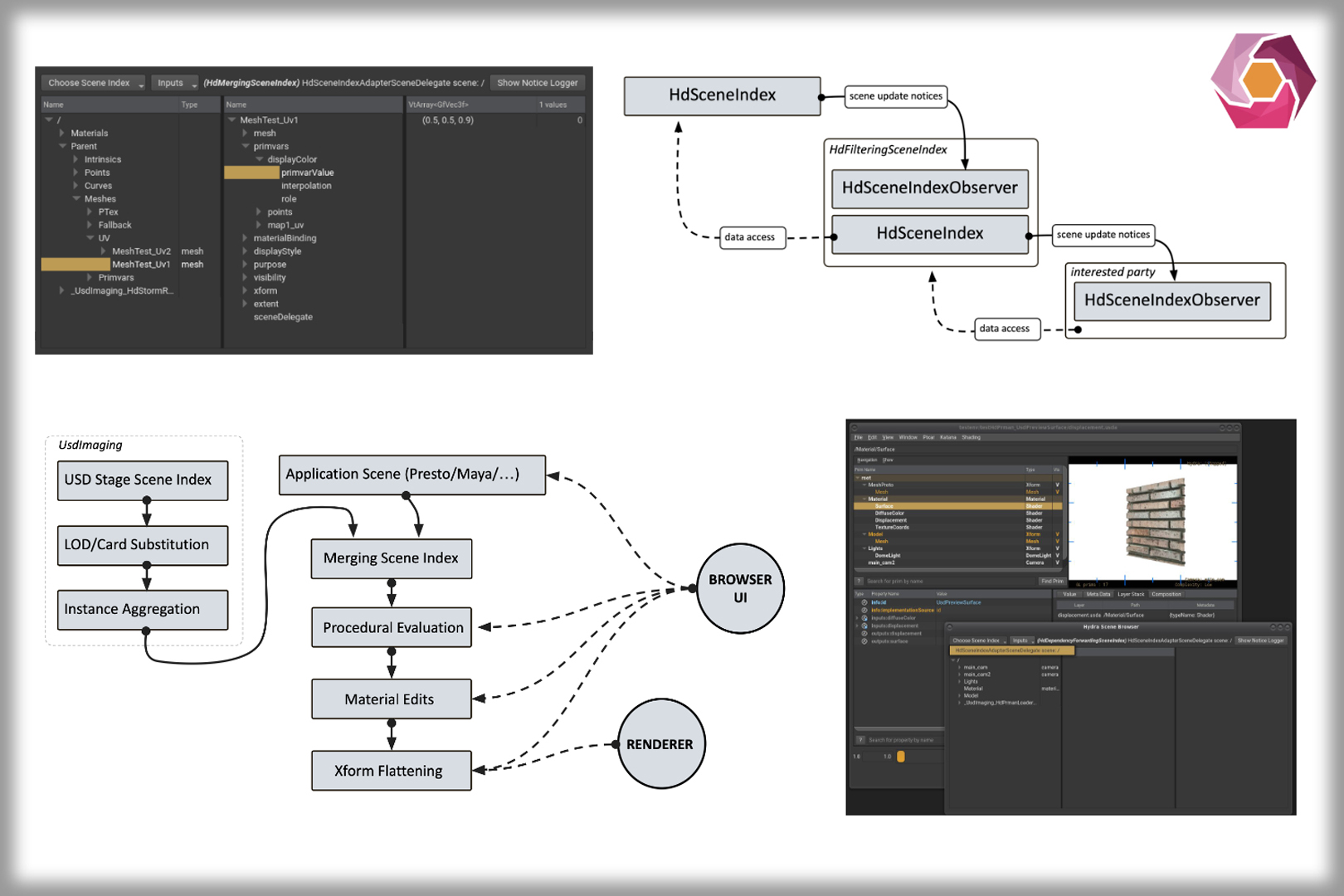“Modular Scene Filtering via the Pixar Hydra 2.0 Architecture” by Cauchois and Lavietes
Conference:
Type(s):
Entry Number: 44
Title:
- Modular Scene Filtering via the Pixar Hydra 2.0 Architecture
Presenter(s)/Author(s):
Abstract:
Pixar’s Hydra project began as an abstract scene interface to an OpenGL-based renderer intended for interactive viewports across multiple applications. As the project added integrations with other renderers (including path tracers), it became clear that it needed a richer scene interface to convey a broader set of renderer features, as well as a more structured and modular way to resolve the scene into rendering primitives.
We’ll discuss the Hydra 2.0 architecture that was developed to address this problem, with examples from two scene filtering cases:
References:
George Elkoura, Sebastian Grassia, Sunya Boonyatera, Alex Mohr, Pol Jeremias-Vila, and Matt Kuruc. 2019. A Deep Dive into Universal Scene Description and Hydra. In ACM SIGGRAPH 2019 Courses (Los Angeles, California) (SIGGRAPH ’19). Association for Computing Machinery, New York, NY, USA, Article 1, 48 pages. https://doi.org/10.1145/3305366.3328033Google ScholarDigital Library
Academy Software Foundation. 2022a. MaterialX. https://www.materialx.org/.Google Scholar
Academy Software Foundation. 2022b. Open Shading Language. http://openshadinglanguage.org/.Google Scholar
Florian Hecht, Daniel McCoy, Stephen LaVietes, and F. Sebastian Grassia. 2021. UsdShade in the Pixar Pipeline. In ACM SIGGRAPH 2021 Talks (Virtual Event, USA) (SIGGRAPH ’21). Association for Computing Machinery, New York, NY, USA, Article 5, 2 pages. https://doi.org/10.1145/3450623.3464670Google ScholarDigital Library




